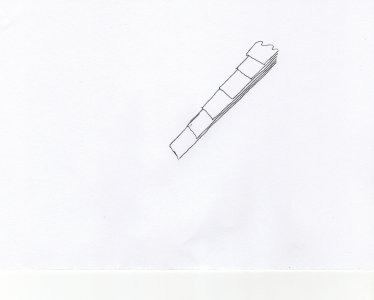My mini mill has the LMS solid column and base, where the column is attached to the base via bolts at the four corners.
I use shims between the column and base at the four mounting bolts in order to align the column. I'm currently using feeler gauges as shims. They are 0.5" wide and I always use two of them side by side to provide more coverage of the column/base mating area. Even so, the shims are only covering about 2/3 of the mating area.
So, once it's correctly trammed, should I buy shim stock in the correct thickness and make shims which would provide 100% coverage, or are the current shims adequate?
I use shims between the column and base at the four mounting bolts in order to align the column. I'm currently using feeler gauges as shims. They are 0.5" wide and I always use two of them side by side to provide more coverage of the column/base mating area. Even so, the shims are only covering about 2/3 of the mating area.
So, once it's correctly trammed, should I buy shim stock in the correct thickness and make shims which would provide 100% coverage, or are the current shims adequate?


